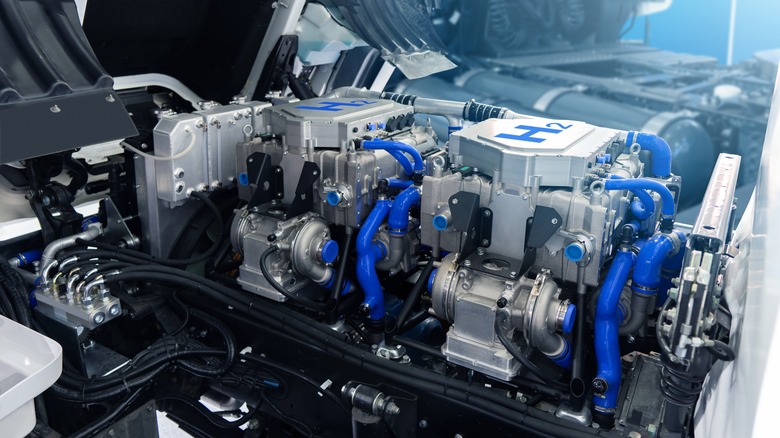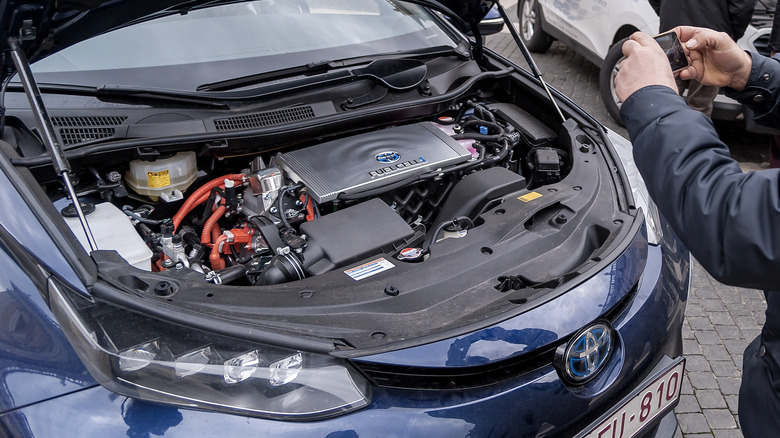
Scharfsinn/Shutterstock
A little more than a decade ago, hydrogen fuel cell vehicles appeared poised to challenge hybrid and battery-powered electric vehicles as a green alternative to gasoline-powered cars and trucks, but the hydrogen revolution never happened. Although EVs come with their own complex issues, the lack of a hydrogen refueling infrastructure and the flammability of hydrogen gas doomed that technology as a viable consumer alternative. Only about 15,000 hydrogen-powered vehicles are on the road in the United States, and all of them are in California. That number is dwarfed by the more than 2 million electric vehicles in the U.S.
Ironically, hydrogen fuel cell vehicles are essentially EVs in that they are powered by electric motors that get their juice from an electrochemical reaction between hydrogen and a catalyst such as platinum. The hydrogen gas is stored in a tank and then channeled to a stack of fuel cells, where it is converted to electricity, which is stored in a battery. The only emission from hydrogen vehicles is water vapor.
The Toyota Mirai comes with a small Li-Ion battery
Stefano Montesi – Corbis/Getty Images
Most current hydrogen fuel cells use a polymer electrolyte membrane (PEM) construction. PEM fuel cells are also called Proton Exchange Membrane Fuel Cells. These cells are made of thin (less than 20 microns) layers of a material resembling plastic wrap.
The catalyst is spread on both sides of the fuel cell, the anode and cathode. On the cell’s anode side, the hydrogen molecules are split into protons and electrons. The protons mix with an ion-conducing polymer (ionomer) and pass through the membrane to the cathode, where a reaction known as oxygen reduction takes place, producing the electrical energy necessary to power the vehicle’s motor.
Fuel cells also have additional layers of carbon paper known as Gas Diffusion Layers (GDLs), which work to channel the components of water vapor away from the reactive layers of the fuel cell and into the vehicle’s exhaust system.
Because hydrogen fuel cell systems don’t produce electricity until they reach a temperature of 50ºF, hydrogen-powered vehicles like the Toyota Mirai come equipped with a lithium-ion battery to help get the electrochemical reaction started.
>>> Read full article>>>
Copyright for syndicated content belongs to the linked Source : SlashGear – https://www.slashgear.com/1452639/power-hydro-how-hydrogen-vehicle-engines-work/
































